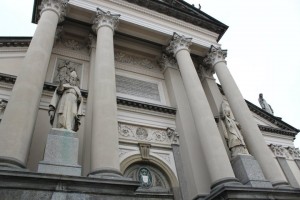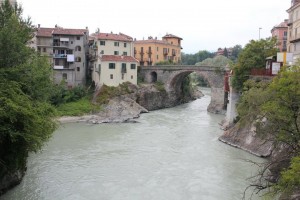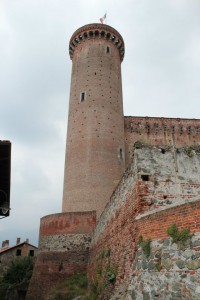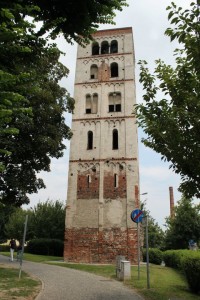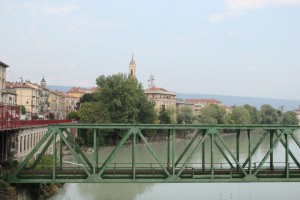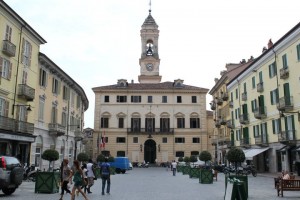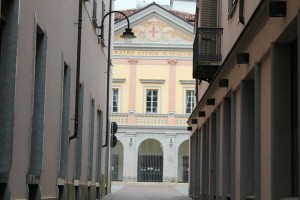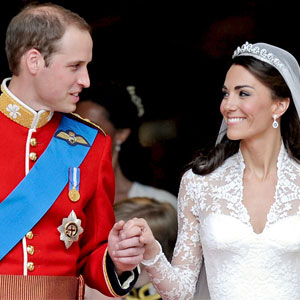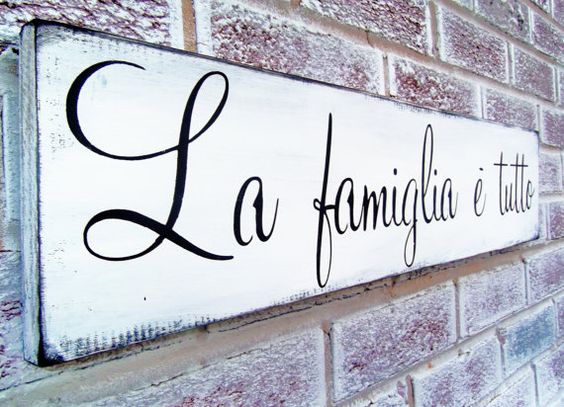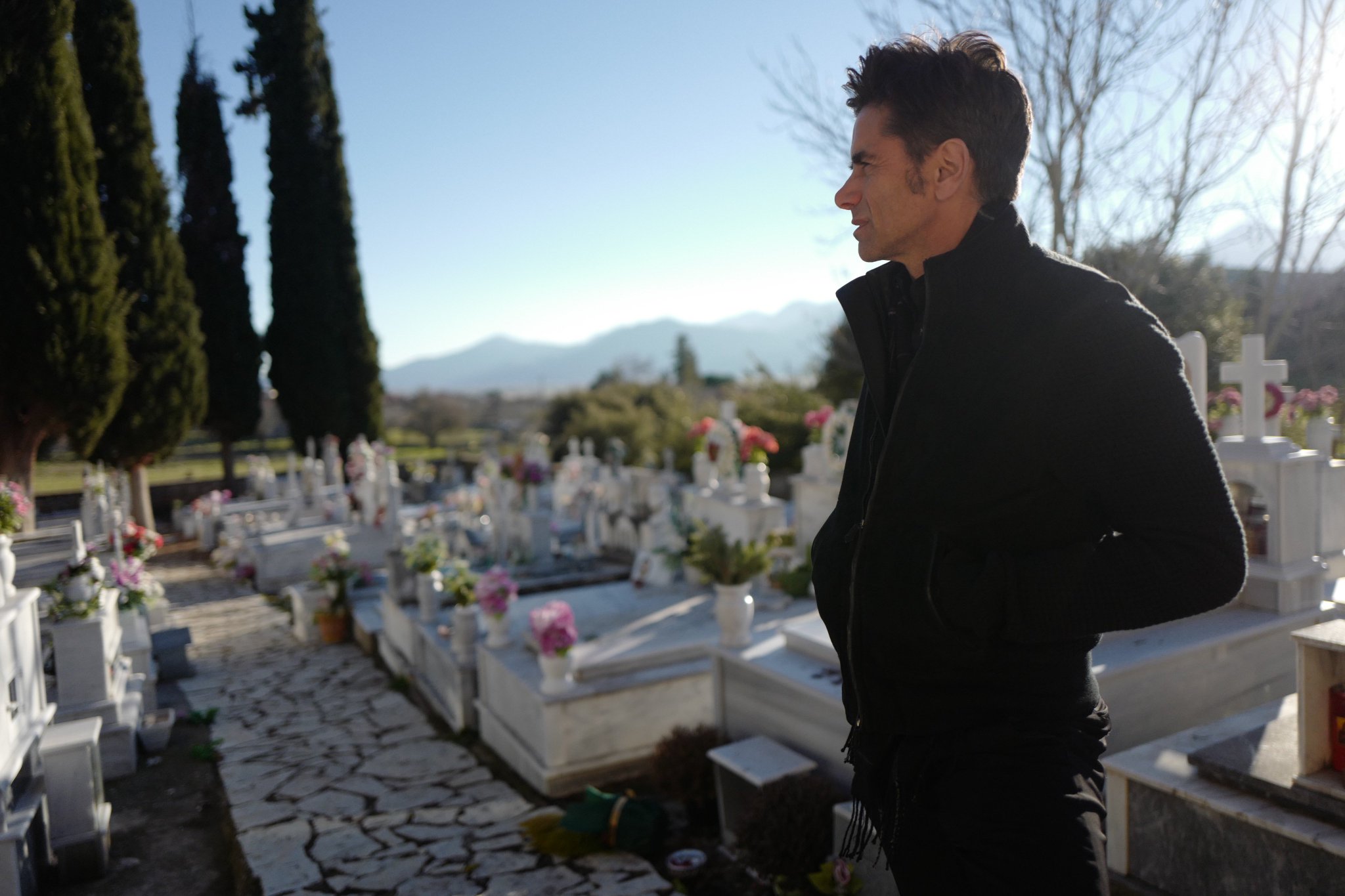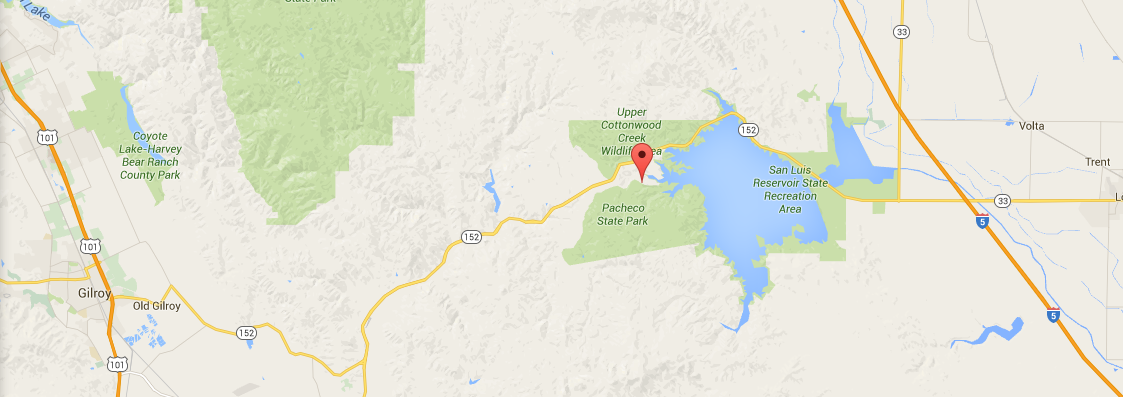“Ivrea la bella
che le rosse torri specchia
sognando a la cerulea Dora
nel largo seno,
fosca intorno è l’ombra di re Arduino.”
I was born in Italy in an old town called Ivrea and my entire family lives there, so speaking of Ivrea is like speaking of my home, my life, my roots. While my dad’s side of the family comes from a village near Vicenza called Lusiana, my mom was born in Ivrea, my grandmother near Ivrea, my great-grandparents in Ivrea as well and so on. My roots are firmly planted here.
Several years ago… 15 to be exact, I bought a rather thick book telling the ‘short story’ of Ivrea and I found it quite fascinating. I never realized how much history my little sleepy town had and how important it was at one time and even recently.
Here is my article as I posted it on the website back then, with photos I took last summer.
Enjoy!
Silvia
Ivrea is the center of the Canavese, in the Piemonte region, in northern Italy, and is quite old. In the year 2000, Ivrea celebrated its 2100 birthday! It was, in fact, mentioned for the first time in a list of colonies of the Roman Empire in 100 b.c. with the name “Eporedia”.
In greek, “Epo” means “horse”, and in old welsh “reda” means carriage, hence it is felt the name Eporedia means “carriage trained by horses”, which makes sense, because Ivrea was in a strategic passage point both for the Romans and the people who lived in the area before (the Welsh) who named it. Eporedia’s name changed with the course of times and centuries from Eporedia to Iporedia, Ivoreia, Ivreia and the modern name Ivrea. Before the year 1200, in books, Ivrea had also been called Iporegia, Iporiensis and even Eboreja. Ivrea is 265 meters above sea level, and it was originally built to the left of the river Dora Baltea. One of the bridges over the river Dora Baltea “Ponte Vecchio” (old bridge) was built by the romans 2000 years ago and renovated through the centuries.
The history of the town is quite extensive, and rich of traditions, I have a 500 page book that narrates the history of the town, and it’s called “A brief history”… so you can imagine how much there is to tell. A couple of buildings that are worth mentioning are the Duomo (a gorgeous church), which was built in the 10th Century over some old ruins of a church built in the year 340 a.c., and the famous Castle with its red towers, built in the 1300s, again over the old ruins of several castles who had been destroyed.
Eporedia remained part of the Roman Empire until its demise in the 5th century (approx. 476), and in the following 100 years the land belonged to several people, namely, the realm of Odoacre, then in 493 of Teodorico and his successors, in 553 the “Bizantini“, until the “Longobardi” took possession of it in the year 572. The Longobardi, in fact, were proprietors of about half of the peninsula. Under their reign, the land had a king, but it was divided into a lot of little pieces belonging to certain members of the nobility. This continued for a little over 200 years, until the year 773, when Carlo Magno won a war against the king of the Longobardi and became Emperor of most of northern Italy along with most of Europe.
The new Emperor didn’t change much in the division of the territory, but he replaced the Dukes and Dukedoms to Counts and Counties and Marquis and Marquisate. Ivrea became a Marquisate. At Carlo Magno’s death the new Sacred Roman Empire started to fall as well. In 888 there was a new Reign of Italy, but it only lasted a century, in fact in the year 961 it was conquered by the King of Germany Ottone I. At the death of Ottone III, his grandson, in the year 1002, the Marquis of Ivrea “Arduino“, became the King of Italy, hence Ivrea became the capital; he had been the 9th Marquis of Ivrea since the beginning of the Reign of Italy. The history at this point becomes a little complicated, full of bishops and descendants of Arduino, wars etcetera. Worth mentioning is the appearance of Tommaso I of Savoia who became Emperor of a large area surrounding Ivrea, and with him started the legacy of the Savoia, who later become the Dukes and then Kings of Italy. In the year 1313 the dominance of Ivrea was passed along to Amedeo V and the prince Filippo of Savoia. In 1543 Ivrea was occupied by the Spanish, who built the “Castiglia”, a fortress to defend the city. A few years later in 1554 the French took possession of the city, but in 1559 it was once again given back to the Duke Emanuele Filiberto of Savoia. Almost 100 years later, in 1641, it went right back into the hands of the French, who lost it and regained it over and over again several times and with many lives lost in battles. On May 26, 1800 Napoleon Bonaparte entered the city along with his victorious troops, establishing control that ended in 1814 after his fall.
The geography of the modern Italy was not what it was 1000 years ago or even just 150 years ago. Italy as we know it today was established in fact in 1861, and the Savoia were part of that history for nearly 1000 years, having had as capital Turin before Rome until the end of WWII. The last King of Italy, Umberto II, took the throne after his father, Vittorio Emanuele III abdicated the throne to him due to the Italians’ malcontent with him after the end of the war because he had sided with Mussolini. Umberto decided to put the fate of the future to the people and in the end a new Republic was born and the Monarchy ended, and the whole Savoia clan were banished from living in Italy and only the women could come to visit. That law has changed in the early 2000s, but that was, sadly, the end of the royalty of Italy that lasted a millenium. What is interesting is the importance of Ivrea in the history of Italy, and the many events that took place throughout the course of the centuries.
As far as more concrete advancements of the city, the railway was inaugurated in 1858 between Ivrea and Turin, and was followed by the construction of “Ponte Nuovo” (New Bridge) in the same year. In 1886 they inaugurated the railway going from Ivrea to Aosta. This one was a little more complicated to do because it entailed building an iron bridge and tunnel over the Dora Baltea.
In 1908 the company Olivetti was started by Camillo Olivetti and became an enormous boost to the economy of the city. According to historians, the very first ‘computer’ was built there, it was called Programma 101. In 1952 they reconstructed the modern hospital, followed by several improvements of all roads and buildings everywhere. In the early 1960s the Turin-Ivrea-Aosta highway was built and in 1981 a new freeway with a bridge called XXV Aprile was opened.
Ivrea is surrounded by very fertile land and many small hills. In between these hills lay several lakes of varied sizes. The Castle of Montalto can be seen from many points as it is built on top of a hill. Between Turin and Aosta and beyond to Chambery in France (the city where the Savoia originated from) are several castles who, in medieval times, used to communicate to each other using flags or lights. It has been said that a message could be sent from Chambery to Turin and back via all these castles including the one in Ivrea in two hours!
Ivrea’s patron’s saint is San Savino, which festival in his honor is held on July 7 of every year. San Savino’s story is quite interesting. He lived between the end of the 3rd century and the beginning of the 4th, and was the bishop of “Spoleto”. Because the Christian faith was not approved by the Roman Empire, he was arrested, put in prison and his hands were cut. His followers kept coming in to visit and support him, and one noble woman in particular received a miracle for his nephew, who regained sight after Savino touched his eyes with his stumps. The person responsable for the imprisonment of the Saint came to know about this miracle and since he himself had a severe eye disease he came to the Saint asking for his help. When Savino repeated the miracle, he converted him and his entire family to the Christian faith and was freed. The emperor Massimiliano though, who could not tolerate the Christian Faith sent a member of his guards to kill Savino, and so he did. A woman who had already kept Savino’s hands, buried the saint a couple of miles outside of the city. In the year 313, after Constantino gave his blessing to the Christian faith, the body of Savino was exumed and put in a church that the people of Spoleto dedicated to him.
His body remained there for 6 centuries, until the son of the marchese of Ivrea Berengario II named Corrado Conone decided to give Ivrea a patron Saint to free the city from a plague that was infesting the town. As soon as the remains of the Saint entered the town (as they say the reporters of the time) the plague ended. The saint was then proclaimed Patron of Ivrea and his remains were put in a cathedral.
Ivrea’s culture includes a very colorful and famous carnival… I will post my article about the Carnival of Ivrea next week!
~Check out Ivrea on Wikipedia.



















